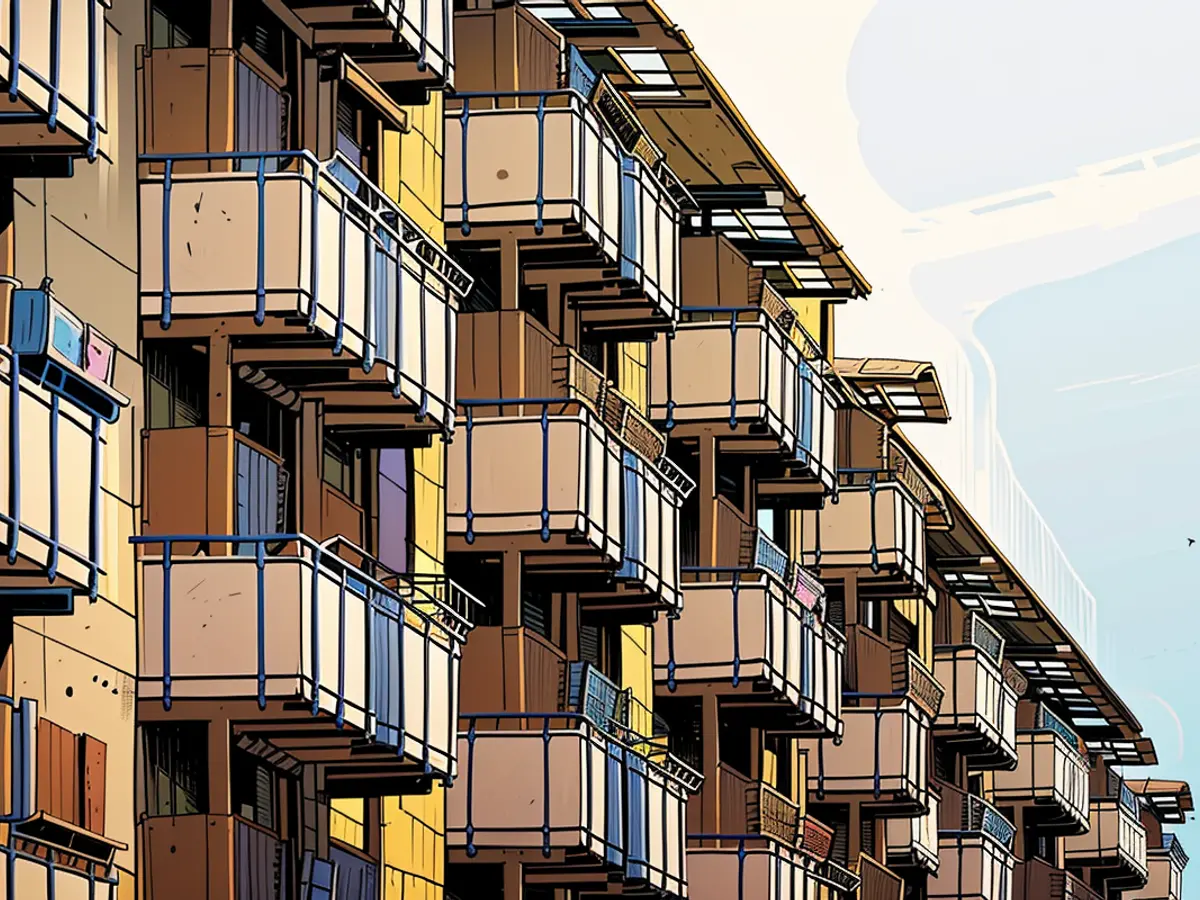Research Reveals Housing Demand Increased by Immigration Outpacing Prior Estimates
There's a higher demand for new homes and flats than initially expected, thanks to a recent surge in immigration to Germany. The Institute of the German Economy (IW) revealed that between 2021 and 2025, 372,000 new apartments will be needed each year compared to the previous estimation of 308,000. From 2026 to 2030, the demand will go down to 302,000 new apartments annually.
The IW observed that 294,400 apartments were built last year, while this year's projections are roughly around 235,000. In comparison to the annual requirement (2021 to 2023), Germany's construction industry is only meeting 79% of the demand. This shortfall is most notable in the seven largest cities in the country, where the ratio of current and required construction activity is only 59%.
Cologne and Stuttgart are struggling the most, according to the IW's research. In the timeframe from 2020 to 2023, only 37% and 43% of the required apartments were built in these two cities, respectively.
The IW apologized for underestimating immigration figures due to the Covid-19 pandemic. Since February 2022, an extra 1.3 million refugees arrived from Ukraine as a result of the Russia-Ukraine conflict, per researchers. The total underestimation of immigration was 1.5 million people.
The IW is urging for immediate incentives and long-term reforms to remedy the housing market situation. Michael Voigtländer, an expert, proposed more lenient building regulations and larger allocation of building land by municipalities. Federal states should also consider reducing land transfer taxes.
Read also:
To meet the increased housing demand caused by immigration, the construction industry needs to accelerate its pace. Study suggests that relaxing building regulations and providing more building land could significantly boost new apartment construction.
Immigration-driven housing demand necessitates examining the role of the construction industry in fulfilling housing requirements, given the shortfall in meeting current demands.








